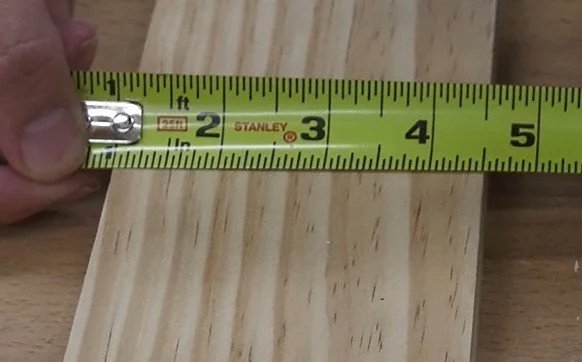HOW TO READ A TAPE MEASURE WITHOUT LOOKING LIKE AN IDIOT
Believe it or not, the first question on some job interviews in industrial trades is, “Can you read a measuring tape?” That may sound silly to a lot of you old-timers, but you'd be surprised how many younger folks never make it past that first question because they have no idea what they're doing with this simple tool. So, in this post, I’m going to share with you how to teach a poor, ignorant kid in your life.
The Hook (or Tab) of a Measuring Tape
Let’s start with a couple of things that are unique to measuring tapes. First up is the hook (or tab, or whatever you want to call it). This part moves back and forth, hopefully by an amount equal to the thickness of the hook itself, so you can take both inside and outside measurements accurately. If the hook doesn’t move much or it moves too much, your tape won’t be accurate. In that case, you might end up “burning an inch.”
What does that mean? It means starting your measurement on the one-inch line and subtracting that inch from the overall measurement. This eliminates any error from the hook, but it also prevents you from using the handy hooking feature. If you’re framing a house, you can just use the hook — that little error won’t matter. But if you need a high level of accuracy, you may want to burn an inch.
“Burning an inch” is a great trick if the hook, or tab, of your measuring tape is inaccurate.
Understanding the Marks
Now, let’s talk about the scale. The tape measure I reference in this article is in inches, which is something that I and 90 percent of our audience are familiar with. If you’re into metric, that’s cool, but I don’t need your smarmy comments about inches versus metric today. Let’s give it a rest for this post so those who this applies to can learn something.
The big numbers on the tape are inches. These are broken down into halves, quarters, eighths, and sixteenths. That’s halves, quarters, eighths, and sixteenths — not “four and three little marks past the big mark.” If you say that in my shop, you’re going to get thumped in the head. The proper way to read this measurement is four and eleven sixteenths.
How do I know it’s four and eleven sixteenths when the lines aren’t labeled? I know because the 16th lines are the shortest, then the eighths are a bit longer, then the quarters, and so on. So, if my measurement falls on one of the shortest marks, I know right away that I’m dealing with 16ths. If it falls on one of the next longest lines, I know it’s eighths. And so on. You don’t have to do the math; you just have to know what the different line lengths mean.
I didn’t even have to count all those 16ths to come up with 11/16. I took a shortcut. There are 16/16 in an inch. In this measurement I can see I’m past a half-inch (which is 8/16 right there). So, I just add the last three, and I’m at 11/16.
Again, the key is to be able to identify the increment you're dealing with based on the length of the line. That way, you know whether you're dealing with 16ths, 8ths, quarters, or halves. Then you can count forward or backward, not from the beginning of the inch, but from the nearest half inch. In time, it will become second nature, and you won’t have to count at all. The fraction will just come to you.
The Practical Side of Measuring Tapes
This applies to any measuring scale, not just a measuring tape. In fact, measuring tapes are most often used in construction trades or situations where absolute accuracy isn’t required. For that reason, you may hear someone say 4-5/8 rather than 4-11/16. They’re ignoring the finest marks on the tape and saying just a little more than the nearest eighth because 16ths are meaningless when you're nailing 2x4s into houses.
But don’t try that on a job interview, because everyone should know the proper way to read a measuring tape.
Need some cool tools for your shop? Browse my Amazon Shop for inspiration.
(This link is an affiliate link. If you make a purchase, I may receive a small commission.)




